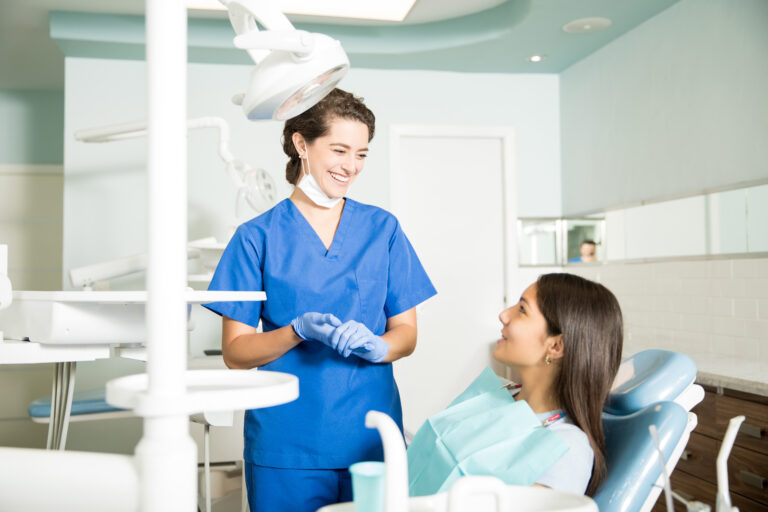What is a Dental Cyst & How is it Treated?
A dental cyst is a fluid-filled sac that forms in the jawbone or around the roots of a tooth. It is typically caused by an infection or inflammation in the dental pulp or periodontal tissues. There are different types of dental cysts, including periapical cysts, dentigerous cysts, and odontogenic keratocysts. Symptoms of a dental cyst may include swelling, pain, tenderness, and the presence of a persistent lump or bump in the affected area. However, in some cases, dental cysts may not cause any noticeable symptoms and can only be detected through dental imaging, such as X-rays or CT scans.What is a dental cyst?
A dental cyst, also known as an odontogenic cyst, is a fluid-filled sac that forms in the jawbone or around the roots of a tooth. It is a pathological condition that arises from various factors, such as infections, developmental abnormalities, or tissue reactions. Dental cysts can develop from different sources within the oral cavity, including the dental pulp, the tissues surrounding the tooth, or remnants of tooth-forming cells. Dental cysts often grow slowly and may not cause noticeable symptoms in the early stages. However, as they enlarge, they can lead to various issues such as swelling, pain, tenderness, tooth displacement, or even fractures in the jawbone. Diagnosis of a dental cyst usually involves a thorough dental examination, including dental imaging such as X-rays or CT scans, to visualize the cyst and assess its size, location, and impact on adjacent structures.How to get rid of dental cyst?
Getting rid of a dental cyst typically involves surgical intervention. The specific treatment approach will depend on the size, location, and type of cyst. Here are the common treatment options:- Cystectomy
- Root canal treatment
- Tooth extraction
- Marsupialization
Dental cyst symptoms
The symptoms of a dental cyst may vary depending on the type and size of the cyst. In some cases, cyst on tooth may not cause noticeable symptoms and can only be detected through dental imaging. However, when symptoms are present, they may include:- Swelling
- Pain or discomfort
- Tenderness
- Tooth-related symptoms
- Pus or drainage
- Facial asymmetry
Dental Cyst Causes
Dental cysts can have various causes. They typically develop as a result of specific conditions or events within the oral cavity. The most common causes of dental cysts include:- Infection
- Tooth Impaction
- Developmental Abnormalities
- Trauma
- Residual Cyst
Dental Cyst Types
There are several types of dental cysts which can develop within the oral cavity. These cysts originate from various structures associated with teeth and can have distinct characteristics. The most common types of dental cysts include:- Periapical Cyst (Radicular Cyst)
- Dentigerous Cyst (Follicular Cyst)
- Odontogenic Keratocyst
- Primordial Cyst
- Residual Cyst
- Calcifying Odontogenic Cyst
Dental cyst removal procedure
The removal of a dental cyst typically involves a surgical procedure known as cystectomy. The specific steps and techniques involved may vary depending on the size, location, and type of cyst. Here is a general outline of the dental cyst removal procedure:- Anesthesia
- Incision
- Cyst Removal
- Cleaning and Irrigation
- Closure
- Post-operative Care
Dental Cyst Pictures
Dental cyst pictures may show:- The size and shape of the cyst: Images can illustrate the size of the cyst, ranging from small to large, and the shape it may take, such as a round or oval structure.
- Location: Pictures can demonstrate the specific location of the cyst within the jawbone or around the roots of a tooth.
- Relationship to surrounding structures: Dental cyst pictures may show how the cyst interacts with adjacent teeth, bone, or soft tissues.
- Internal structure: In some cases, images can reveal the internal structure of the cyst, including the presence of fluid or other materials.
- Variations between different types of cysts: Pictures can highlight the differences between various types of dental cysts, such as periapical cysts, dentigerous cysts, or odontogenic keratocysts.
Best dental clinic in turkey for dental treatment
Turkey is known for its advanced dental care and has several reputable dental clinics. The best dental clinic can vary depending on individual needs, preferences, and the specific treatment required. It’s important to conduct thorough research and consider various factors such as the clinic’s reputation, qualifications of the dentists, range of services offered, patient reviews, and the clinic’s adherence to safety and hygiene standards for teeth in turkey. To find the best place in turkey for teeth for your specific dental treatment, consider the following steps:- Research and gather information
- Check qualifications and expertise
- Range of services
- Technology and facilities
- Reviews and testimonials
- Consultation and communication
How to treat a dental cyst at home?
It’s important to clarify that dental cysts cannot be effectively treated at home. Dental cysts are a complex dental condition that require professional evaluation and treatment by a qualified dentist or oral surgeon.Are dental cysts common?
A dental cyst is relatively common in the field of dentistry. They can occur in individuals of any age, although they are more frequently diagnosed in adults.Can a dental cyst be cancerous?
Dental cysts, also known as odontogenic cysts, are typically noncancerous (benign) in nature. However, it’s important to note that in rare cases, certain types of dental cysts may exhibit more aggressive behavior or have the potential for malignant transformation.Can a dental cyst cause headaches?
In some cases, a dental cyst can cause headaches. The exact mechanism behind this association is not fully understood, but there are a few possible reasons why a dental cyst could lead to headaches:- Pressure on surrounding structures
- Infection and inflammation
- Nerve involvement
- Temporomandibular joint (TMJ) involvement

